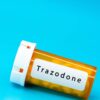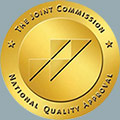The Centers for Disease Control and Prevention (CDC) explain that opiates refer exclusively to the natural version of opioids whereas opioids encompass all natural, semisynthetic, and synthetic opioids.
Opioids are a type of drug used to alleviate moderate to moderately severe pain. According to the National Institute on Drug Abuse, “Opioids are a class of drugs that include the illegal drug heroin, synthetic opioids such as fentanyl, and pain relievers available legally by prescription, such as oxycodone (OxyContin®), hydrocodone (Vicodin®), codeine, morphine, and many others.” Opiates are substances that are derived from the opium plant, poppy. They elicit a pain-relieving effect by binding to the opioid receptors in one’s brain and depressing the central nervous system.
Detox & Withdrawal Timeline
Every individual is different and will progress through the detox process at varied speeds. There is, however, a broad opiate detox timeline provided by American Addiction Centers, which is divided into the following stages:
1. Anticipatory
Stage one occurs between three to four hours after a person’s last opiate dose. It is the stage that one’s anxiety and fears related to the inevitable oncoming withdrawal symptoms begin to manifest and increase. This is also the stage when a person will begin to experience drug cravings and may exhibit drug-seeking behaviors.
2. Early Acute
Stage two starts to take over between eight to ten hours after one’s last opiate dose. This is when a person may begin to experience flu-like symptoms and his or her anxiety levels in relation to the discomforts of withdrawal symptoms continue to rise. Symptoms such as stomachaches, vomiting, nausea and sweating typically begin to manifest in this stage. Drug cravings and drug-seeking behaviors remain present.
3. Fully Developed Acute
Stage three typically begins one to three days after an individual’s last opiate dose. During this stage an individual’s withdrawal symptoms will reach their peak. Drug cravings are the most severe during this stage of detox, as the withdrawal symptoms are the most uncomfortable. Withdrawal symptoms such as muscle spasms, diarrhea, insomnia, elevated blood pressure, and body tremors are common during stage three.
4. Post Acute Withdrawal Syndrome (PAWS)
While acute withdrawal symptoms have, for the most part subsided, up to twenty-four months after one’s last dose of opiates individuals may experience certain long-term side effects. Mood swings: anxiety, depression, irritability, insomnia, and poor concentration are all common occurrences during stage four. Additionally, drug cravings remain present, and individuals remain at increased risk of relapse.
The severity of the withdrawal symptoms an individual may experience will depend on the type of opiate abused, the current health of the individual, the tolerance level built to the abused opiate, the dosage/ potency of the medication abused, the length of time an individual abused the opiate, if he or she was simultaneously abusing other substances, and his or her personal health history.
For Information and Support
Contemplating detox can be a very challenging time. Before any individual can begin to work on the underlying issues contributing to their substance abuse problem, they must be separated from the substances in their systems. If you are concerned for yourself or a loved one regarding substance abuse, and/ or addiction we recommend reaching out for help as soon as possible. The earlier you seek support, the sooner you and your loved ones can return to leading happy, healthy, and fulfilling lives. Sherwood Detox offers a stand-alone detox program. For additional information on detox, please do not hesitate to contact us at: 818-626-9959 or feel free to email us anytime. One of our trusted counselors is available to talk and discuss how we can best support you on your journey.








